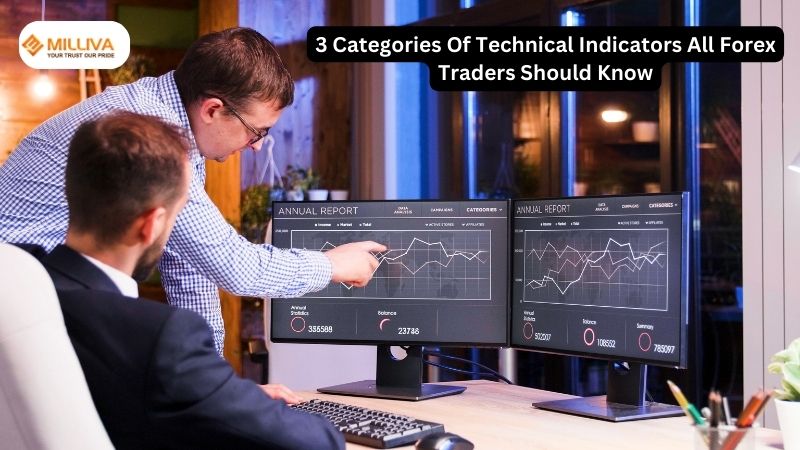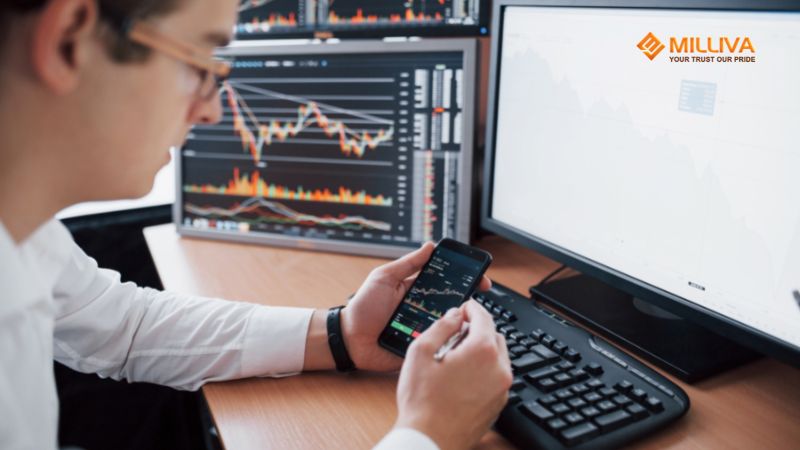3 Categories Of Technical Indicators All Forex Traders Should Know

![]()
Price movements in the forex market are difficult to predict, but they are not entirely random. There is a logic behind currency pairs rising or falling in value. Decades of forex trading have revealed that this logic can often be identified and predicted using technical indicators in the Best Forex Trading Company In India.
Technical indicators come in many shapes and sizes, and no particular indicator is seen as an essential tool for evaluating potential forex trades. As traders gain experience and learn about the various technical indicators, they prefer specific indicators that align with their trading strategy and prove reliable over time.
Lagging Indicators
Lagging indicators are based on historical price data of the currency pair. Moving averages, trading volume, and other lagging indicators confirm the presence of trends and patterns already underway. By identifying these patterns in action, traders can trade based on the expectation that the currency pair will maintain this trend or pattern.
Common lagging indicators include:
Bollinger Bands
Bollinger Bands are based on the Simple Moving Average (SMA), a lagging indicator that can provide value to your trading strategy. Bollinger Bands represent the two bands on either side of the SMA, representing one standard deviation of divergence from the SMA line. Traders can use Bollinger Bands to identify overbought conditions when the current price of the currency pair breaks above the upper band or oversold conditions when the price breaks below the lower band.
Moving Average Convergence Divergence (MACD)
MACD illustrates the relationship between simple moving averages and exponential moving averages. Crossings between these two moving averages can indicate bearish or bullish momentum, which pattern traders can use to time their trades and gauge the relative speed of price movements.
Relative strength Index (RSI)
RSI is one of the most popular oscillators that reflects a given currency’s upward or downward price momentum for the given currency. The scale for RSI is 0-100. An asset is considered overbought when the RSI is above 70, indicating poor future momentum for the currency. An RSI below 30 reflects oversold conditions.
Any Moving Average Or Oscillator:
All these indicators are based on historical price data and price data and price movements used to predict patterns, trends, and momentum for the respective currency pair in Top Forex Traders In India.
Leading Indicators
While lagging indicators identify trends traders can use, leading indicators use current currency pair data to predict how prices may change. Although leading indicators carry the risk of trading based on predictions, the advantage of these indicators is that you can maximize your profits by predicting price movements before they occur.

Common leading indicators include:
Fibonacci Levels:
Based on mathematical ratios and theory developed centuries ago, these levels are among the best indicators traders use to predict price movements. The vast popularity of Fibonacci levels makes them a reliable indicator, as many traders time their entries and exits based on these levels.
Lines of Support and Resistance:
Support and resistance lines can be reliable indicators for forex trading, especially when currency pairs are trading within a range. They assume that range-bound currency pairs will move between support and resistance lines until they break out above or below them. Traders can use them to profit from the movement within a range or take advantage of a breakout outside these lines.
Confirming Indicators
Its confirmatory indicator provides weak information for traders to use. Instead, this type of indicator can be used to complement and confirm the recommendation of other indicators. When evaluating trades with lagging or leading indicators, traders should consider indicators as confirmatory tools to double-check their work. Some indicators can strengthen the trader’s confidence in that action.
For example, when evaluating trading opportunities with the moving average of a currency pair, traders can use the Average Directional Index (ADX) as a confirming indicator. The ADX provides its own defined value because it reflects the relative strength of a trend but does not indicate whether the trend is rising or falling. However, when used with moving averages, they can provide vital context to help traders assess the strength of popular price movements.
Similarly, volume is a useful confirming indicator when combined with other leading or lagging indicators. Volume indicates the relative trading activity of the currency pair – but without any other indicators, it is impossible to know what this volume means or why it is essential. It cannot provide a clear call under any circumstances. Still, it can be helpful as a confirming indicator to help traders identify and evaluate price breakouts in the Best Online Forex Trading Platform In India.

Visit us at: www.milliva.com





